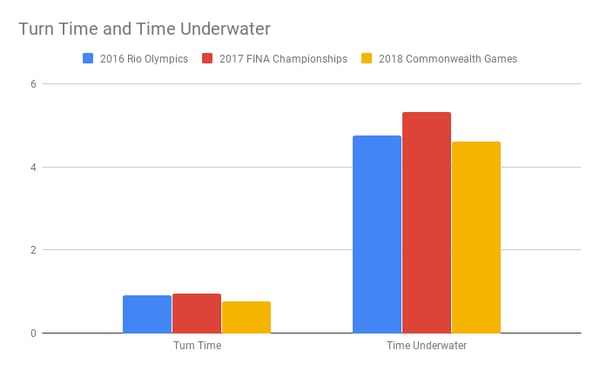TritonWear December Swimmer of the Month: Emily Seebohm
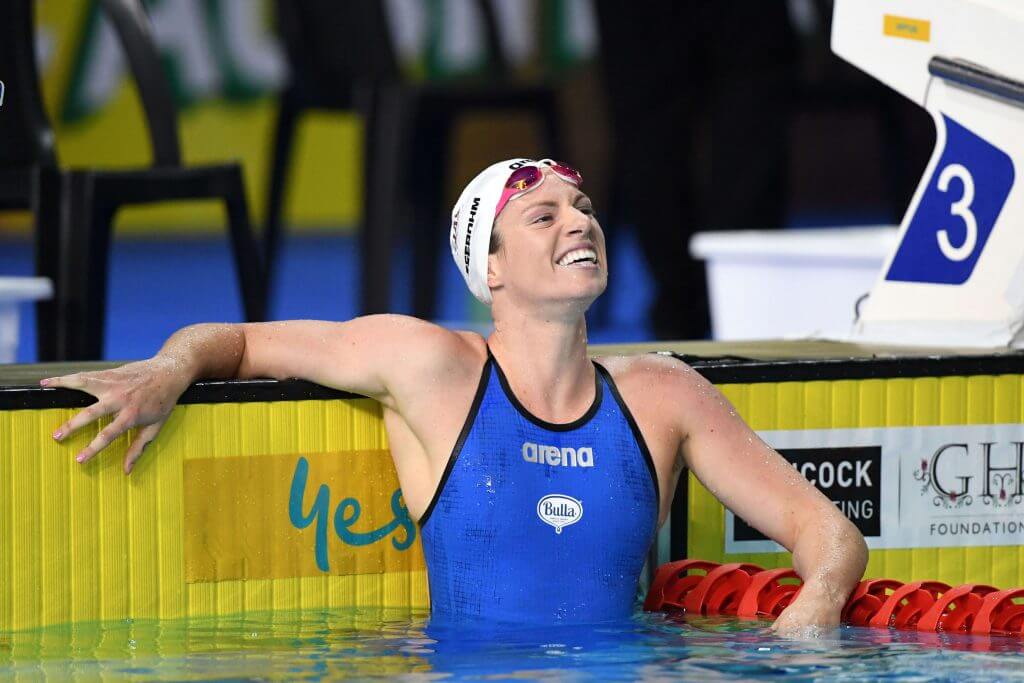
Editorial content is sponsored by TritonWear. Visit TritonWear.com
Each month, Swimming World will partner with TritonWear to bring you our Swimmer of the Month. This month, we feature Emily Seebohm.
Who is Emily Seebohm?
Emily Seebohm is a backstroke phenomenon from Australia, who also competes in freestyle, butterfly and IM events. She holds Australian records for individual events, including all long course and short course backstroke events, and 200IM (SC), as well as relay events, including 400 medley relay (LC) and 200 medley relay (SC).
In 2009, Emily was awarded the Medal of the Order of Australia for services to sport as a gold medalist at the 2008 Olympic Games. She was Swimming Australia’s 2014 Short Course Swimmer of the Year, and in 2017, she was named Female Australian Swimmer of the Year, an award she shared with Bronte Campbell in 2015.
Emily’s Claim to Fame
Emily started competing for Team Australia when she was 14 years old, making her debut onto the global swimming stage at the 2007 World Championships. Here are some of her international wins since then.
- 2018 Pan Pacific Championships – 2 gold (400 free relay and 400 medley relay), 1 silver (100 back)
- 2018 Commonwealth Games – 1 gold (50 back), 1 silver (100 back), 1 bronze (200 back)
- 2017 World Championships – 1 gold (200 back), 2 bronze (100 back and 400 medley relay)
- 2016 Olympic Games – 1 silver (400 medley relay)
- 2013 World Championships – 2 gold (50 and 100 back), 2 silver (400 free and 200 IM), 1 bronze (200 back)
- 2012 Olympic Games – 1 silver (100 back)
- 2010 Pan Pacific Championships – 2 gold (100 back, 200 IM), 4 silver (50 fly, 100 free, 400 free relay and 400 medley relay)
- 2009 World Championships – 1 silver (400 medley relay), 1 bronze (100 back)
- 2008 Olympic Games – 1 gold (400 medley relay)
- 2007 World Championships – 1 gold (400 medley relay)
Emily’s Metrics
We looked at Emily’s 100m backstroke metrics from the 2016 Rio Olympic Games, 2017 FINA World Championships, and 2018 Commonwealth Games, to analyze how her metrics and strategies changed over time, and how these impacted her overall performances.
Stroking Metrics
Speed
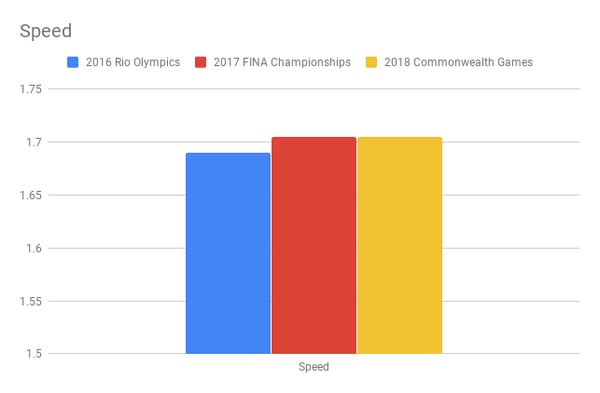
Emily’s backstroke speed improved at the 2017 FINA Championships and 2018 Commonwealth Games compared to her performance at the 2016 Olympics. Interestingly, she split her first 50 slightly faster at the 2016 Olympics, but swam better times in 2017 and 2018.
The improvements in her overall speed came from her increased speed on the second half of the 2017 and 2018 races. In both these years, her faster speed on the second lap resulted in splits around 0.7 seconds lower than in 2016, which offset her slightly slower starts, leading to faster times and better final standings.
Stroke rate and DPS
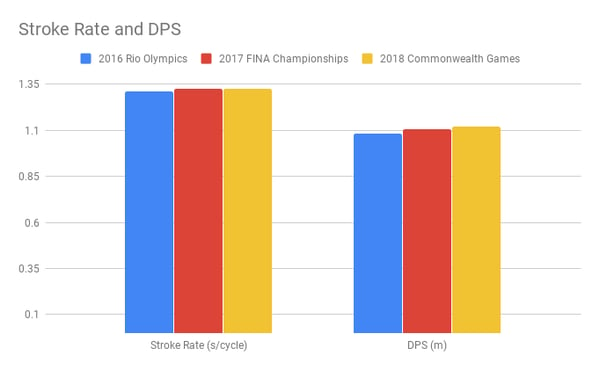
Across all 3 competitions, Emily’s stroking strategy was to pull slower, but longer and more powerful strokes. Her DPS was consistently above her heat’s average, and she had a slower stroke rate than most of her competitors.
Her stroke rate remained relatively steady from one year to the next, but her DPS simultaneously increased.
Stroke Index
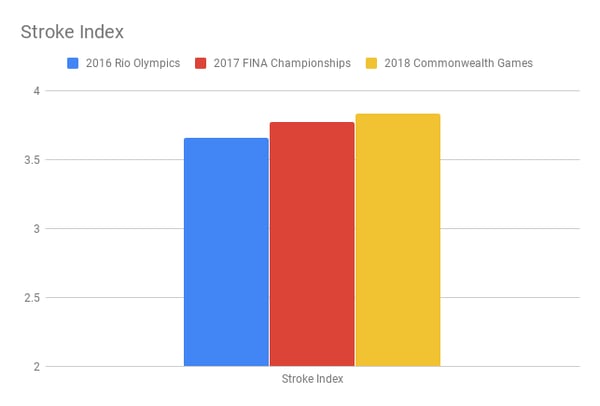
The improvements in her speed, along with the increase in her DPS resulted in higher stroke index from 2016 to 2018. She had one of the most efficient backstrokes of the heat in all 3 races, and she improved her stroke efficiency even more from year to year.
Transition Metrics
Time Underwater and Turn Time
In 2016 and 2017, Emily had the slowest turn time in the field. She improved on this fairly significantly in 2018, where she had the quickest turn time in her heat.
On average, she spent less time underwater than her competitors, even in 2017, where her time underwater was around half a second longer than in 2016 and 2018.
Takeaways
Good pacing is essential for a fast race, even for distances as short as 100m.
Emily held back slightly on the first lap of the 100m backstroke at the 2017 FINA Championships and 2018 Commonwealth Games, but she was able to finish her races stronger, which ultimately led to faster times.
Changes in just a single metric, or a combination of a few, can lead to overall progress – improving metrics is not all or nothing.
Emily’s better pacing strategy was not the only factor in the improvements in her overall performance. Her DPS and stroke index improved after the 2016 Olympics, and though her stroke rate remained nearly the same, the changes in her DPS and stroke index were enough to improve her speed, leading to faster times and podium finishes.
Knowing your strengths, and improving on them further, produces great results.
Emily pulls powerful and efficient strokes. This strategy earned her a spot at the 2016 Olympic finals. In the years following the Olympics, she strengthened her DPS and improved her backstroke efficiency, dropping her times in these races.




